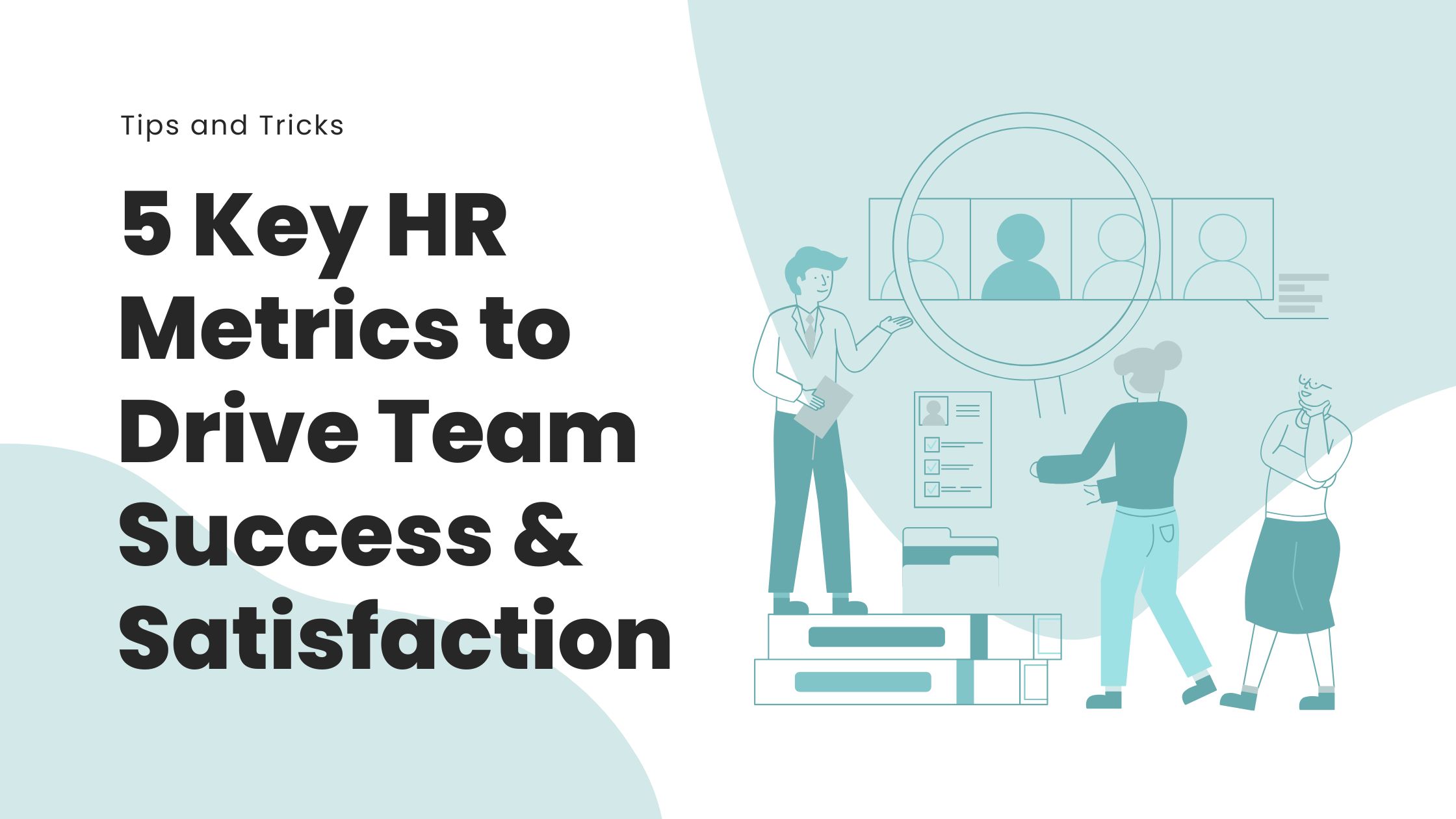In today’s competitive business world, HR professionals are expected to go beyond simply tracking turnover rates. While turnover is important, several other critical HR metrics can give a fuller picture of a team’s success and satisfaction.
By focusing on key performance indicators (KPIs) like employee engagement, productivity, retention, and learning and development, HR can help drive positive outcomes for the organization and its workforce.
Table of Contents
Employee Engagement Score
Employee engagement is a crucial metric for measuring employee commitment and motivation. High engagement levels correlate with higher job satisfaction, better performance, and reduced turnover.
To measure engagement effectively, HR teams often use employee surveys or pulse checks.
How to Measure Engagement:
- Surveys: Regular surveys asking about job satisfaction, work environment, and leadership effectiveness.
- Employee Feedback: Gathering feedback through one-on-one meetings and team discussions.
- Pulse Checks: Short, frequent surveys that measure employee sentiment in real time.
Example:
Let’s say a company conducts an annual employee engagement survey and finds that 85% of employees report high job satisfaction.
However, the company also identifies that employees are unhappy with the current workload, which leads to burnout. Addressing this concern can improve engagement and retention.
| Metric | Before Intervention | After Intervention |
| Engagement Score | 70% | 85% |
By addressing key concerns like workload and improving team communication, the company boosts engagement.

Time to Hire
Time to hire measures the speed at which HR fills an open position. It’s a critical metric because prolonged hiring processes can result in missed opportunities, lower team morale, and burnout for existing staff who must cover the workload.
How to Improve Time to Hire:
- Streamline the Hiring Process: Simplify your recruitment pipeline by eliminating unnecessary steps.
- Use Technology: Leverage AI-powered recruiting tools to screen candidates faster and improve the overall candidate experience.
- Clear Job Descriptions: Ensure job postings are clear and attract the right talent.
Example:
Consider a company with a time-to-hire metric of 45 days. After implementing an automated applicant tracking system (ATS) and training hiring managers for quicker decision-making, the company reduces its time to hire to 30 days, improving team productivity.
| Metric | Before Intervention | After Intervention |
| Time to Hire | 45 days | 30 days |
Faster hiring not only fills positions quickly but also improves employee morale, knowing that understaffing won’t last long.

Employee Productivity
Employee productivity directly impacts team success. It measures the output of employees, whether in terms of sales, projects completed, or tasks finished. Tracking this metric helps identify areas for improvement and reward high performers.
How to Measure Productivity:
- Output Tracking: Measure the completion of projects, tasks, or sales quotas.
- Performance Reviews: Regular performance appraisals to assess individual contributions and set goals.
- Time Tracking: Monitoring how efficiently employees use their work hours can identify productivity gaps.
Example:
A software company tracks its developers’ output based on the number of features completed in a sprint. After introducing a new task management system, developers’ output increased by 25%, contributing to quicker product releases.
| Metric | Before Intervention | After Intervention |
| Productivity | 75 features per quarter | 100 features per quarter |
Productivity improvements lead to better team results, faster project completion, and enhanced job satisfaction for employees who see their contributions recognized.
Employee Retention Rate
The retention rate indicates how well a company is keeping its employees. High retention is a sign that employees are happy with their jobs, environment, and growth opportunities.
High turnover rates, on the other hand, can signal issues with management, compensation, or company culture.
How to Improve Retention:
- Career Development: Provide employees with opportunities for advancement and skill-building.
- Work-Life Balance: Encourage a healthy balance by offering flexible hours or remote work options.
- Recognition Programs: Regularly recognize and reward employees for their contributions.
Example:
A retail company had a retention rate of 60% in 2022. After introducing a mentoring program and offering paid leave for training, their retention rate increased to 85% in 2023.
| Metric | Before Intervention | After Intervention |
| Retention Rate | 60% | 85% |
By addressing the underlying issues contributing to turnover, the company not only improves retention but also boosts overall team morale and satisfaction.

Learning & Development (L&D) Participation
Learning and development (L&D) programs are vital for continuous improvement. Employees who feel that they are growing and developing their skills are more likely to be engaged, productive, and satisfied. Tracking L&D participation helps measure the success of training initiatives.
How to Track L&D Participation:
- Training Completion Rates: Measure how many employees complete a course or training session.
- Skill Assessments: Conduct pre-and post-training assessments to measure learning outcomes.
- Feedback Surveys: Use employee feedback to assess the effectiveness and relevance of L&D programs.
Example:
A marketing team offered an online digital marketing course to its members, with 75% of employees completing it. Post-course assessments showed a 40% improvement in their ability to develop successful campaigns.
| Metric | Before Intervention | After Intervention |
| L&D Participation | 60% | 75% |
| Performance Increase | N/A | 40% |
Increased participation in L&D programs leads to higher skill levels, which translates to better performance and greater job satisfaction.
Conclusion
Measuring HR metrics beyond turnover helps create a more comprehensive understanding of team performance and satisfaction.
By focusing on key metrics like employee engagement, time to hire, productivity, retention, and learning and development, HR teams can drive meaningful change.
These metrics empower organizations to build a motivated, productive, and satisfied workforce, which ultimately leads to sustained business success.
FAQs
- What HR metrics should every organization track?
- Every organization should track employee engagement, time to hire, productivity, retention rate, and learning & development participation to get a holistic view of team performance and satisfaction.
- How can HR improve employee engagement?
- HR can improve engagement by implementing regular surveys, offering feedback opportunities, recognizing employee achievements, and promoting a supportive company culture.
- Why is time to hire an important HR metric?
- Time to hire is important because a prolonged hiring process can lead to missed opportunities, disrupted team dynamics, and increased workloads on existing staff.
- How does learning & development improve team success?
- L&D programs help employees gain new skills and knowledge, which improves their performance and keeps them engaged in their roles, leading to greater job satisfaction and retention.
Strategies to improve retention include offering career development opportunities, recognizing achievements, promoting work-life balance, and ensuring competitive compensation packages.
What strategies can help improve employee retention?


Leave a Reply